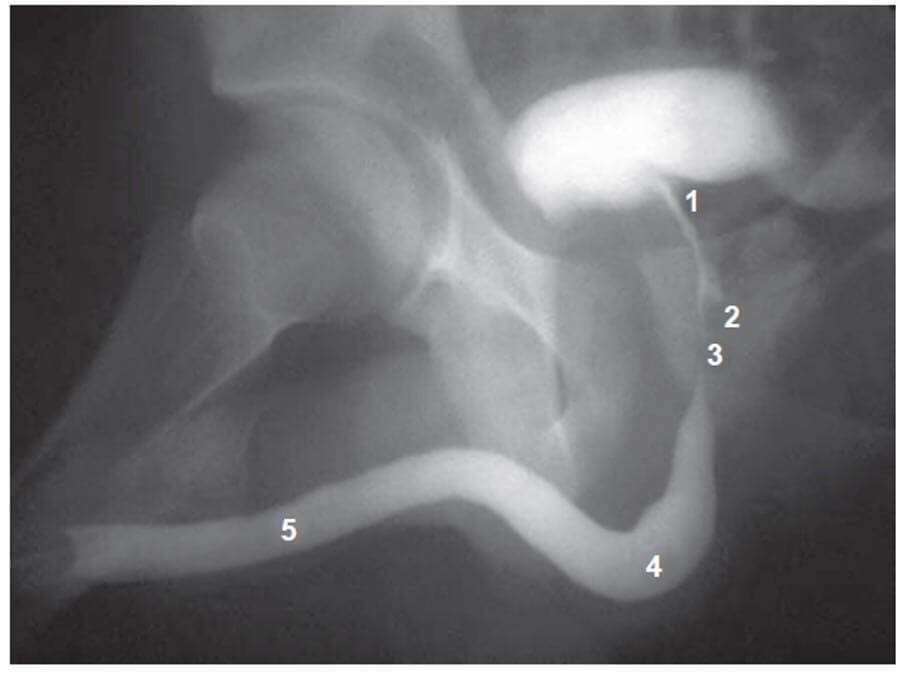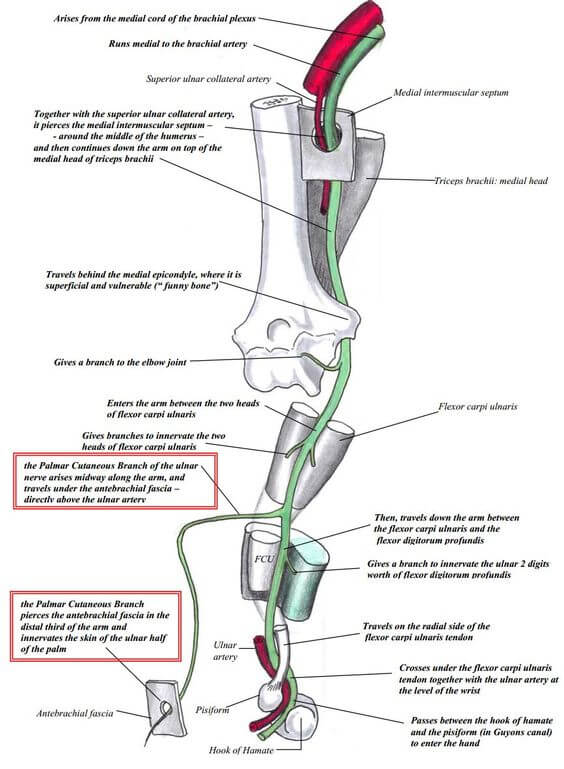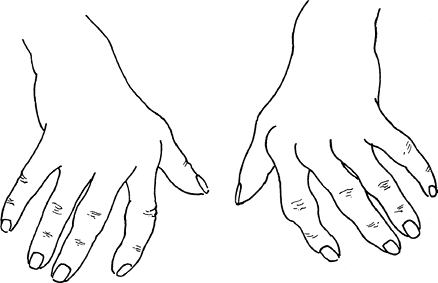
The above picture shows a VCUG scan which is a commonly performed test in urology for diagnosing various conditions related to urethra, bladder as well as assessing upper tracts. Diseases that can be diagnosed using VCUG includes:
- Urethral strictures and stenosis
- Posterior urethral valves
- Vesicourethral reflux
- Uretroceles and many more
So, it is always better to have an idea about interpreting the scan as a surgeon rather than relying on radiologists as they may not be available every time.
This article will try to enumerate normal anatomical landmarks of urethra on the scan using above mentioned picture.
The male urethra has been divided into 2 main categories:
- Anterior urethra (penile and bulbar urethra)
- Posterior urethra (membranous and prostatic)
In the picture above:
5 – represents penile urethra which extends from meatus to the inferior pubic rami
4 – represents the bulbar urethra that extends from the inferior pubic rami to the obturator foramen; we can see the curvature of the bulbar urethra in the picture above which can be further divided into proximal, mid and distal with no clear-cut anatomical landmarks on the scan.
3– At the level of the obturator foramen is the bulbo-membranous junction which marks the beginning of membranous urethra denoted by 3 in the picture. Note that this is the most common site of injury to the urethra following trauma followed by membranous urethra. This is because the bulbar urethra hangs on the perineum between pubic symphysis as compared to membranous urethra which is relatively stable. This causes shearing effects between the two during trauma which causes tear in this junction.
2 – represents a verumontanum which is the lower border of prostatic urethra
1 – represents the prostatic urethra and above it is the bladder.

He is an avid reader, guitar player, melodious singer and old songs lover. He has a passion for making medical knowledge accessible and comprehensive.


